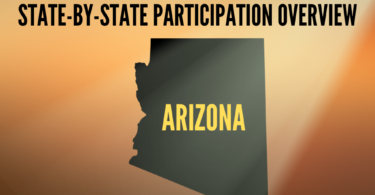Do you have a scholarship offer? Do you have more than one? Congratulations! Remember our blog from last week, Making Sense of Your Scholarship Offer? If you haven’t read it, it is a great precursor for this article and an important resource for figuring out exactly what the different types of scholarship offers mean. This week, we will provide you with a step-by-step guide for comparing multiple scholarships. This process will work for any number of scholarship offers; all you need to do is follow the steps below!
STEP 1: Collect Your Offers
As an example, let’s assume that two schools have offered you scholarships:
School A, an in-state school, offers you the following:
“We can cover your tuition and books.”
School B, an out-of-state school, offers you the following:
“We can offer you an out of state-tuition waiver that will cover the difference between in-state and out-of-state tuition and cover 75% of your in-state tuition costs with a baseball scholarship. You also will qualify for a $1,500 academic scholarship.”
STEP 2: Convert the Scholarship Offers into the Same Terms (costs you and your family will have to pay)
When you get scholarship offers, you also will need to get all the information you need to find out how much you and your family will be responsible for paying after all the scholarship and financial aid is accounted for. This will allow you to make side-by-side comparisons of the offers.
Let’s assume you have been given the following information for each school:
School A:
In-State Newcomer
| Type | Amount | Equivalency (%) |
| Tuition | $10,000 | .50 |
| Fees | $500 | .025 |
| Room | $4,500 | .225 |
| Board | $4,000 | .20 |
| Books | $1,000 | .05 |
| Total Estimated Cost | $20,000 | 1.00 |
School B:
Out-of-State Newcomer
| Type | Amount | Equivalency (%) |
| Tuition | $22,000 | .68 |
| Fees | $1000 | .03 |
| Room | $4,500 | .14 |
| Board | $4,000 | .12 |
| Books | $1,000 | .03 |
| Total Estimated Cost | $32,500 | 1.00 |
*Out of State Tuition waiver is worth $11,000 or .40 towards equivalency
Figuring out out-of-pocket costs:
School A:
This is very easy to calculate. They will cover all of your tuition and books. That means they will cover $10,000 (tuition) + $1,000 (Books)= $11,000 total. You are left with covering $9,000 (minus any financial aid you receive). This is a 55% baseball offer.
School B:
This is a little more complex. They are offering you a tuition waiver to cover out of state tuition costs worth $11,000. Then, they are offering to cover 75% of the remaining $11,000 in state tuition cost, which is an additional $8,250. That is $19,250 (baseball scholarship) + $1,500 (academic scholarship)= $20, 750 total scholarship. You are left covering $11,750 (minus any financial aid you receive). This is a 59% baseball offer and a 64% total offer.
STEP 3: Compare and Make a Decision
School A: In-State, 55% offer, will cost you $9,000 (minus financial aid) each year.
School B: Out-of-State, 64% offer, will cost you $11,750 (minus financial aid) each year.
If this is a strictly financial decision, this easy 3-step process quickly allows you to see which school will cost less out of your (and your family’s) pocket. If other factors (type of school, opportunity, location, academic prestige, etc.) are important, this decision allows you to see exactly how much more you will be paying for those preferences. For example, if all else is equal but you feel School B’s degree will give you more opportunities than School A’s degree after college, paying an extra $11,000 over all 4 years may be worth the investment.
No matter what your priorities are, you will want to have the most important factors for your decision figured out well before you start fielding offers. That way you can make a rational decision and not get side-tracked by confusing scholarship terminology or a slightly bigger offer from a school that is not the best fit for you.
A few important observations:
- Not all percentages are created equal! As this article shows, comparing percentages is not the same as comparing out-of-pocket costs. The higher percentage scholarship between these 2 example schools ends up to be the more expensive one to attend. The percent scholarship offer is a good way to figure out how much a school values you (because all schools get the same number of baseball scholarships), but it is not a good way to figure out which school is the best choice is for you financially.
- Both these offers are strong offers! The average baseball scholarship is between 25-55%, with certain positions (pitchers) or outstanding players occasionally getting more. Remember, baseball is not a full-ride sport! Make sure your expectations for scholarship offers are realistic. Here’s more on scholarship amounts by level.
- Academic scholarships and financial aid can make a big difference in making college affordable. Bundling multiple kinds of scholarships and financial aid is a great way to lower costs of college. That is why grades and test scores are so important!
- Make sure you understand the impact that taking out loans will have on your future. This can be hard to grasp but talk with your parents or guardians and use this article to avoid putting yourself in a bad financial situation when you graduate.
Now that you know how to understand and compare scholarship offers, all you need to do is decide where you will be playing. Make sure that you take your time and get all of your (and your family’s) questions answered. Good luck!







